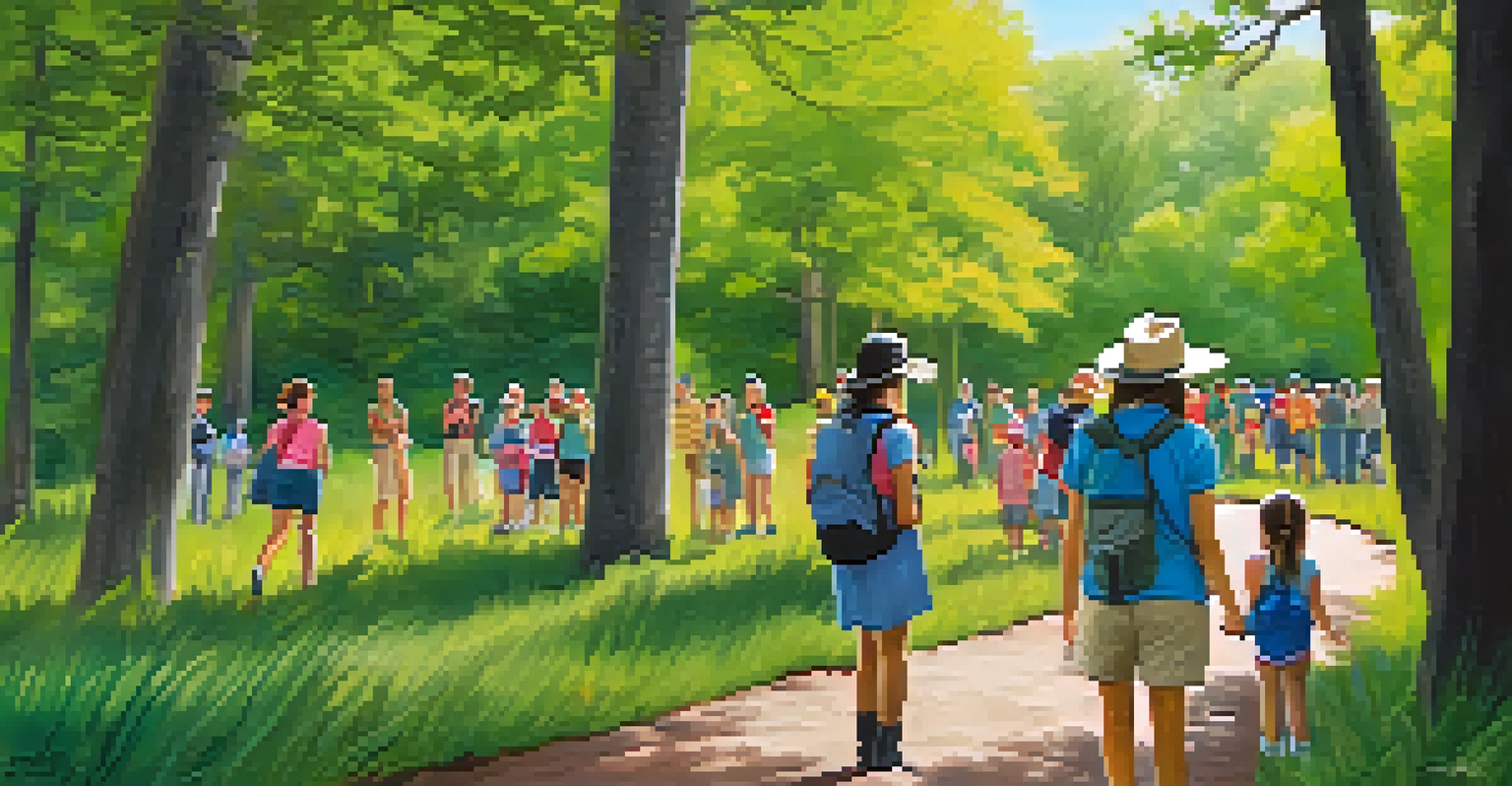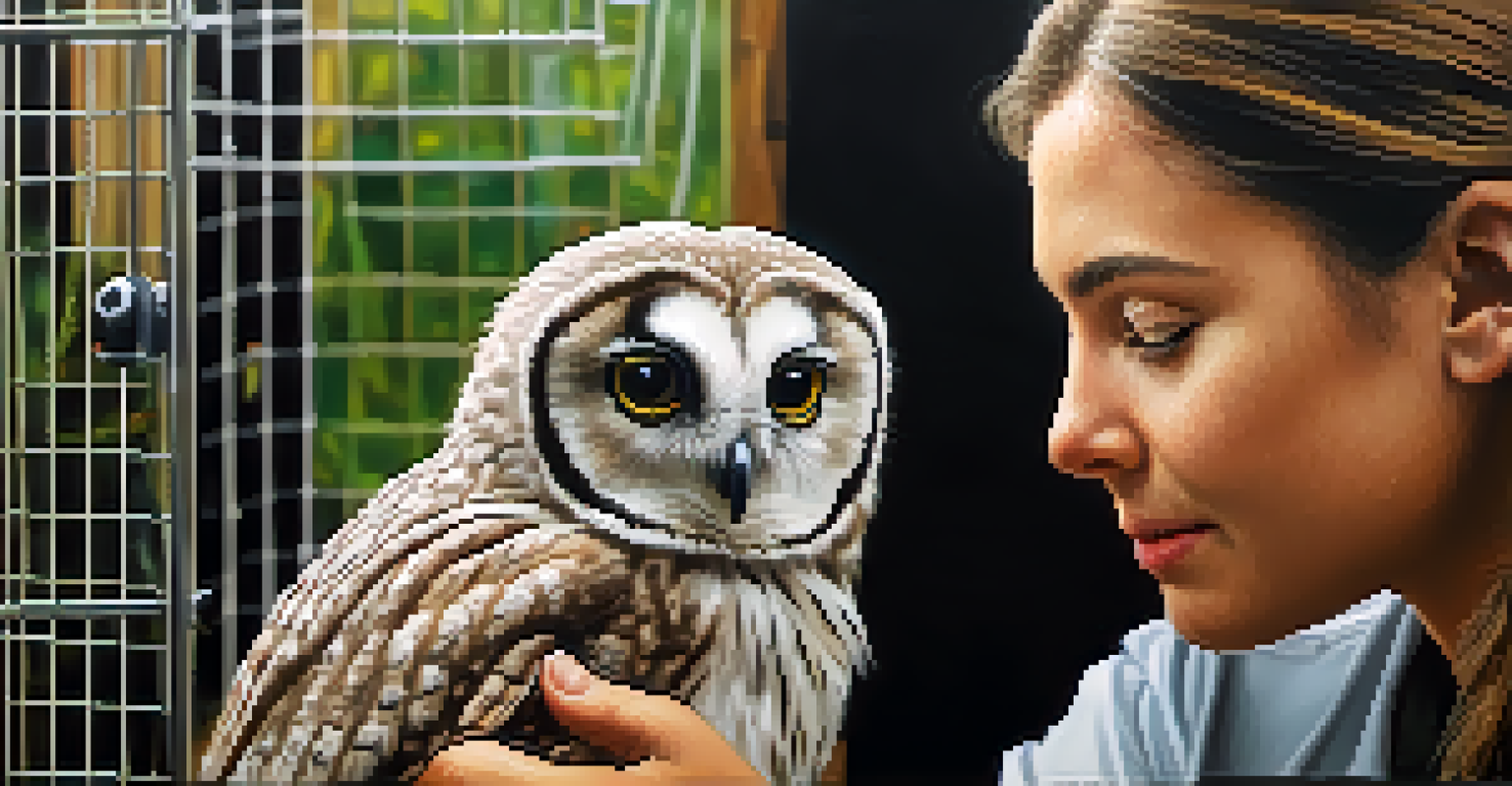The Role of Texas Parks in Wildlife Conservation Efforts

Introduction to Texas Parks and Wildlife Conservation
Texas is home to a vast network of parks that play a crucial role in wildlife conservation. These parks not only offer stunning landscapes but also serve as sanctuaries for diverse species. With over 90 state parks and numerous wildlife refuges, Texas is committed to preserving its natural heritage.
In every walk with nature one receives far more than he seeks.
Wildlife conservation is vital for maintaining biodiversity, and Texas parks provide essential habitats for countless plants and animals. By safeguarding these areas, we ensure that future generations can enjoy the rich wildlife that Texas has to offer. Parks are more than just recreational spaces; they are lifelines for many species.
In this article, we will explore how Texas parks contribute to wildlife conservation efforts, highlighting various programs, partnerships, and success stories that showcase the importance of these natural spaces.
Habitat Preservation and Restoration Initiatives
One of the primary functions of Texas parks is habitat preservation. By protecting natural environments, parks create safe havens for wildlife to thrive. This preservation includes everything from wetlands and grasslands to forests and deserts, each supporting unique ecosystems.

In addition to preservation, many parks are actively involved in restoration efforts. For instance, restoring native vegetation can help combat invasive species and improve overall ecosystem health. These initiatives not only benefit wildlife but also enhance the recreational experience for park visitors.
Texas Parks Preserve Wildlife Habitats
Texas parks play a crucial role in preserving diverse ecosystems, offering safe havens for countless species.
Through habitat preservation and restoration, Texas parks ensure that wildlife has the necessary resources to survive and flourish, ultimately contributing to the overall health of the environment.
Partnerships with Conservation Organizations
Texas parks frequently collaborate with various conservation organizations to amplify their impact. These partnerships often result in shared resources, expertise, and initiatives that benefit wildlife. Organizations like the Texas Parks and Wildlife Department (TPWD) play a key role in these collaborations.
The environment is where we all meet; where we all have a mutual interest; it is the one thing all of us share.
For example, joint efforts can include wildlife monitoring programs, educational outreach, and habitat improvement projects. By working together, parks and organizations can effectively tackle the challenges facing wildlife conservation. This collaborative approach fosters a sense of community and shared responsibility for Texas's natural resources.
Through these partnerships, Texas parks strengthen their conservation efforts, ensuring that they have the support and knowledge needed to protect vulnerable species.
Educational Programs Promoting Conservation Awareness
Education is a powerful tool in fostering a conservation-minded public, and Texas parks excel in this area. Many parks offer educational programs that engage visitors and teach them about the importance of wildlife conservation. From guided nature walks to workshops, these programs cater to all ages.
Visitors learn about local ecosystems, the challenges wildlife faces, and how they can contribute to conservation efforts. By raising awareness, parks inspire individuals to take action, whether through volunteering, supporting conservation initiatives, or simply practicing responsible outdoor ethics.
Community Involvement Drives Conservation
Active participation from volunteers enhances conservation efforts and fosters a deeper connection to nature.
Through education, Texas parks empower the community to become stewards of the environment, ensuring that wildlife conservation remains a priority.
Wildlife Rehabilitation and Recovery Programs
Texas parks are also involved in wildlife rehabilitation and recovery programs, providing care for injured or orphaned animals. These programs aim to rehabilitate wildlife and, whenever possible, release them back into their natural habitats. This hands-on approach underscores the parks' commitment to animal welfare.
Many parks collaborate with local wildlife rehabilitation centers, ensuring that animals receive the best possible care. This partnership helps to address the immediate needs of injured wildlife while also contributing to the long-term recovery of species in the wild.
By engaging in rehabilitation efforts, Texas parks play a critical role in not only saving individual animals but also supporting the overall health of ecosystems.
Research and Monitoring of Wildlife Populations
Research is a cornerstone of effective wildlife conservation, and Texas parks actively engage in monitoring local wildlife populations. By collecting data on species distribution, behavior, and health, parks can identify trends and challenges that may affect wildlife. This information is essential for informed conservation strategies.
Parks often collaborate with researchers and universities to conduct studies that provide valuable insights into local ecosystems. This research helps identify which species are at risk and what measures can be taken to protect them. Knowledge gained from these studies can lead to more effective management practices.
Education Empowers Conservation Efforts
Educational programs in Texas parks raise awareness about wildlife conservation and inspire individuals to take action.
Through research and monitoring, Texas parks ensure that they are equipped with the information needed to adapt their conservation efforts to the ever-changing needs of wildlife.
The Impact of Community Involvement and Volunteerism
Community involvement is vital to the success of wildlife conservation efforts in Texas parks. Volunteers play a significant role in various activities, from habitat restoration to educational outreach. Their contributions not only enhance park programs but also foster a deeper connection between individuals and nature.
Many parks offer structured volunteer programs, allowing community members to actively participate in conservation efforts. This involvement helps raise awareness and cultivates a sense of stewardship among participants. When people feel connected to their parks, they are more likely to advocate for their protection.

By harnessing the power of community involvement, Texas parks amplify their conservation efforts and create a collective impact that benefits wildlife and the environment.
Conclusion: The Future of Wildlife Conservation in Texas Parks
As we look to the future, the role of Texas parks in wildlife conservation remains crucial. Ongoing efforts in habitat preservation, education, and community involvement will shape the trajectory of conservation in the state. With continued support and engagement, parks can adapt to the challenges posed by climate change and urban development.
The collaboration between parks, organizations, and the community is essential in ensuring that Texas's wildlife thrives. By investing in conservation initiatives today, we can secure a healthier environment for future generations.
Ultimately, Texas parks serve as vital champions of wildlife conservation, and their efforts will have lasting impacts on the natural world we cherish.